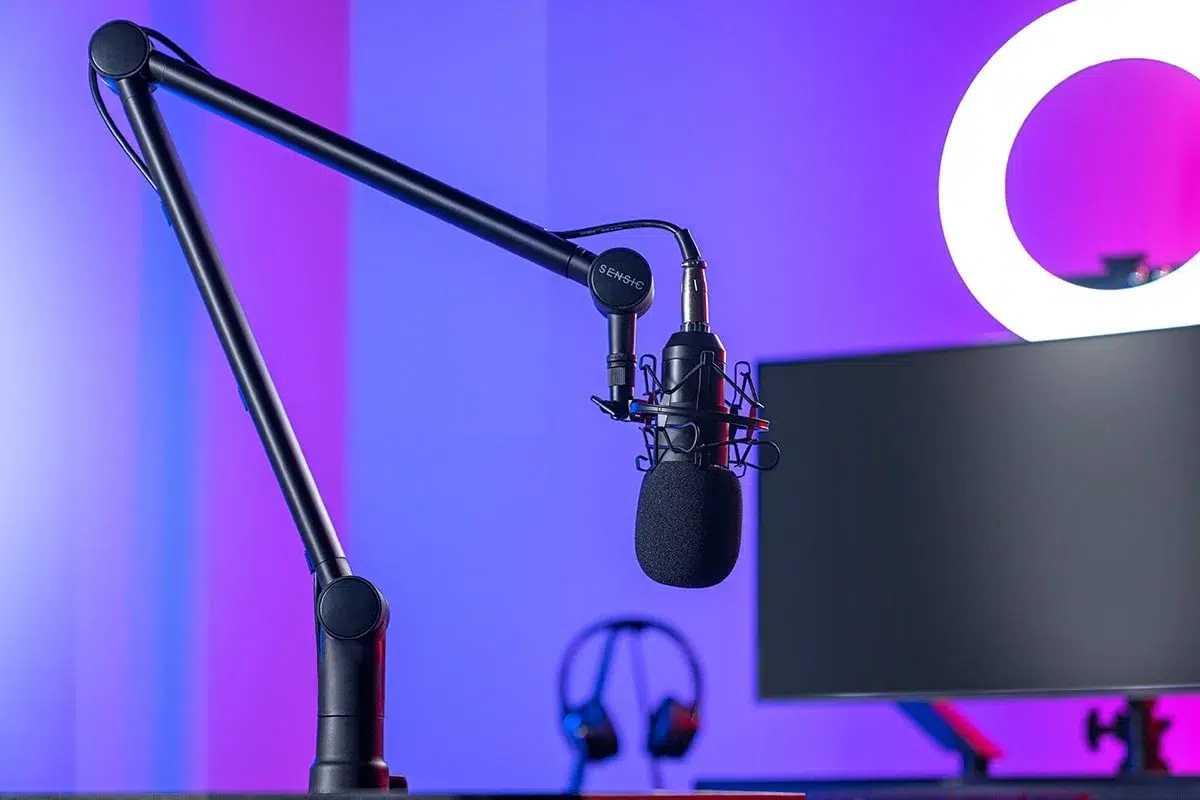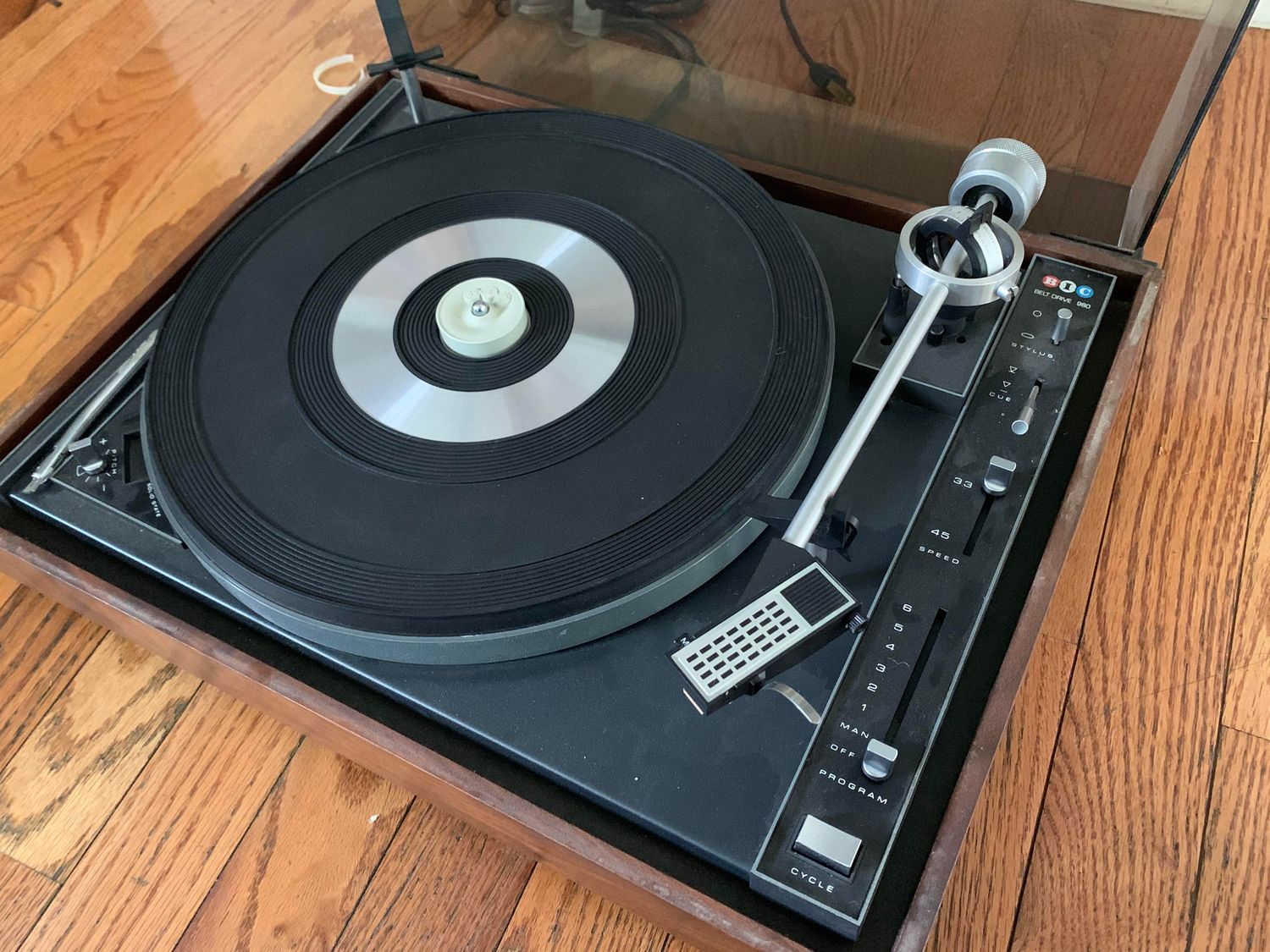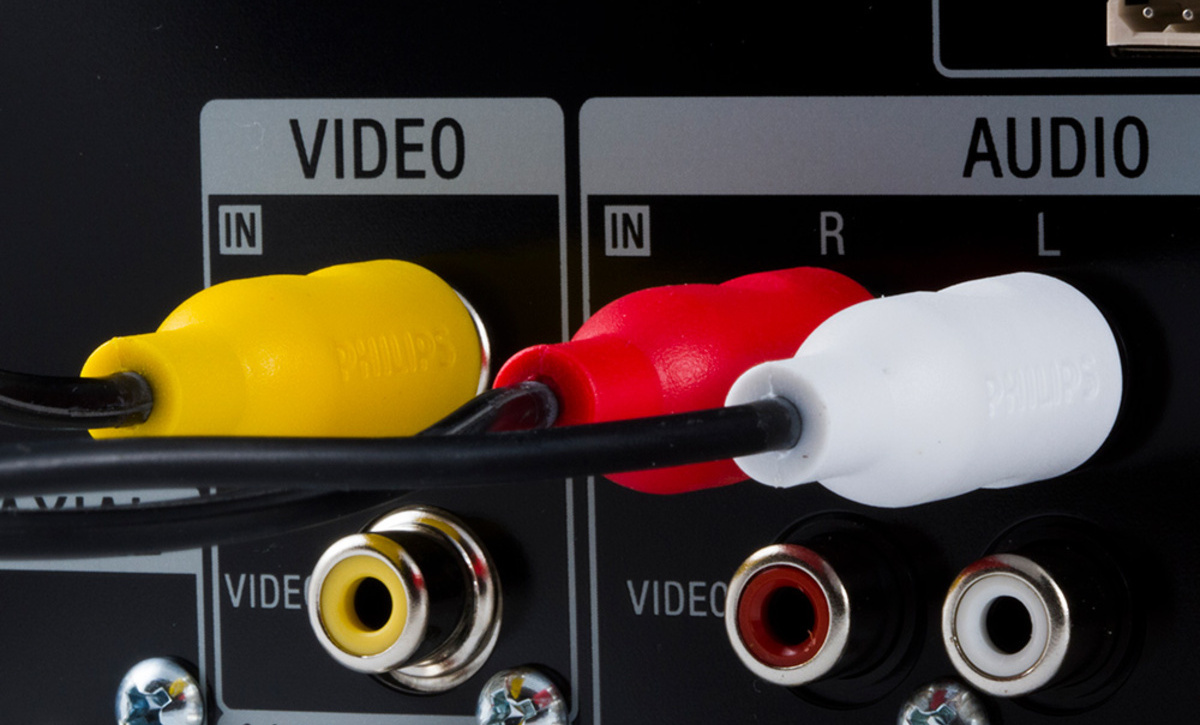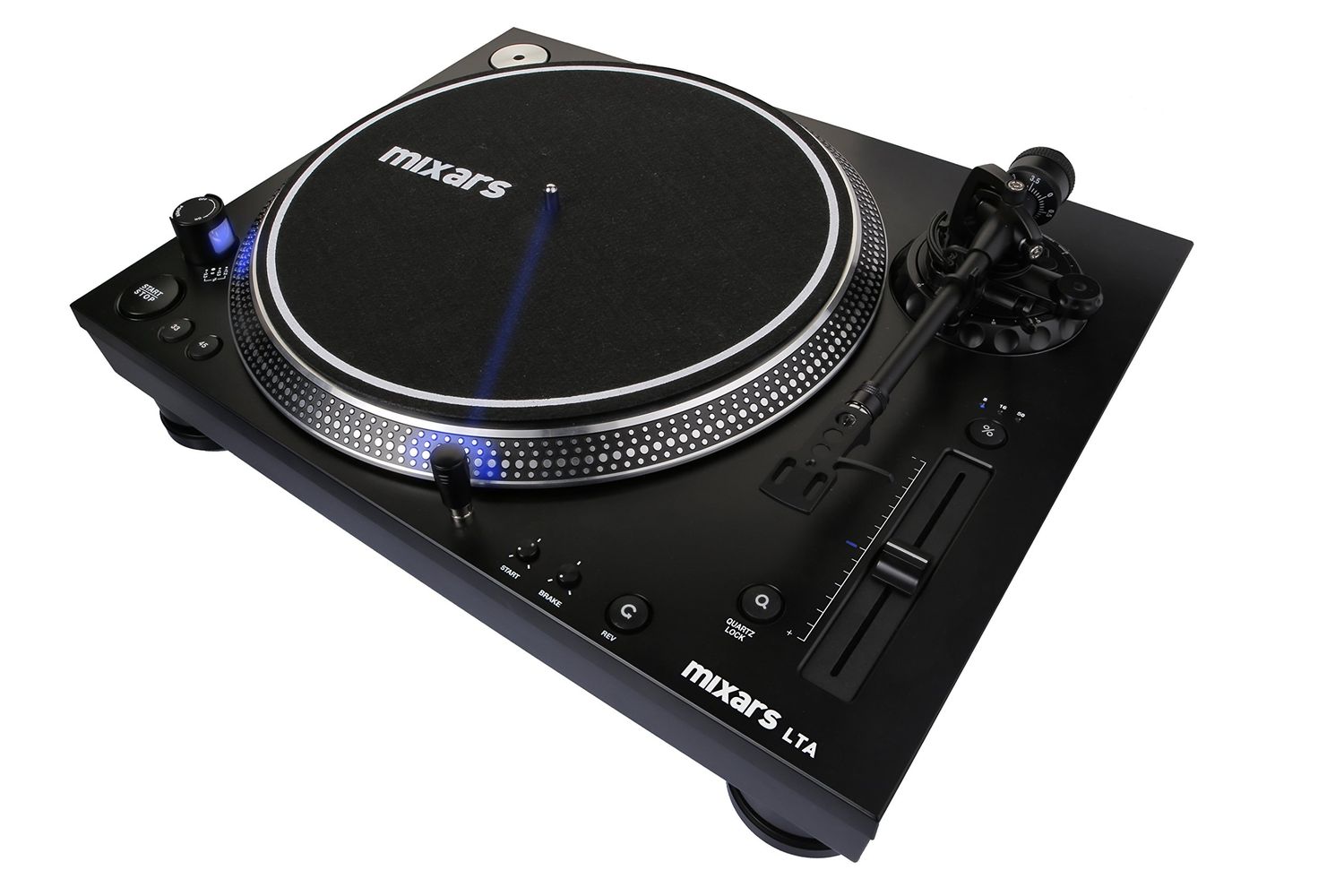Home>Devices & Equipment>Microphone>Where To Put Microphone Arm


Microphone
Where To Put Microphone Arm
Published: February 17, 2024
Discover the best placement for a microphone arm to improve your audio quality. Learn where to position your microphone for optimal sound.
(Many of the links in this article redirect to a specific reviewed product. Your purchase of these products through affiliate links helps to generate commission for AudioLover.com, at no extra cost. Learn more)
Table of Contents
Introduction
Introduction
When it comes to recording high-quality audio, the placement of your microphone arm is crucial. Whether you're a podcaster, gamer, musician, or content creator, finding the optimal placement for your microphone arm can significantly impact the sound quality of your recordings. In this comprehensive guide, we'll explore the various mounting options for microphone arms and discuss the factors to consider when determining the best placement for your setup.
The placement of a microphone arm is not only about convenience but also about achieving the best sound capture. By strategically positioning your microphone arm, you can minimize background noise, reduce reverberation, and capture clear, crisp audio. Additionally, the right placement can enhance your comfort and overall recording experience, allowing you to focus on your content without being hindered by technical limitations.
Whether you're considering desk mounting, wall mounting, or floor stand options, each placement method has its own advantages and considerations. By understanding the factors that influence microphone arm placement and the available mounting options, you can make an informed decision that aligns with your specific recording needs and space constraints. Let's delve into the key factors to consider when determining the ideal placement for your microphone arm and explore the mounting options that best suit your setup.
Factors to Consider
Factors to Consider
When deciding where to place your microphone arm, several important factors should be taken into account. By carefully considering these elements, you can ensure that your microphone arm is positioned optimally for both audio quality and practicality.
- Recording Environment: Assess the acoustic properties of your recording environment. Consider the presence of background noise, room reverberation, and potential sound reflections. If you’re in a noisy environment, you may need to position the microphone arm closer to your mouth to minimize unwanted noise pickup.
- Comfort and Ergonomics: Your comfort during recording sessions is crucial. Ensure that the microphone arm placement allows for a natural and relaxed posture while speaking or performing. Avoid straining or reaching excessively to adjust the microphone, as this can lead to discomfort and affect your performance.
- Space Constraints: Evaluate the available space in your recording area. If you have limited desk space, wall mounting or floor stand options may be more suitable. Conversely, if you have ample desk space, a sturdy desk mount could be the ideal choice.
- Flexibility and Adjustability: Consider the adjustability of the microphone arm. Opt for a mounting option that allows for easy repositioning and height adjustments. This flexibility enables you to adapt the microphone arm to different recording scenarios and preferences.
- Cable Management: Efficient cable management is essential for a tidy and organized setup. Ensure that the chosen mounting option facilitates neat cable routing, minimizing the risk of cable entanglement or accidental tugging during adjustments.
- Aesthetics: While functionality is paramount, the visual impact of the microphone arm’s placement should not be overlooked. Choose a mounting option that complements the overall aesthetics of your recording space, whether it’s a sleek desk mount, a discreet wall bracket, or a stylish floor stand.
By carefully weighing these factors, you can make an informed decision regarding the placement of your microphone arm. Each consideration plays a crucial role in optimizing your recording setup for both performance and convenience.
Desk Mounting Options
Desk Mounting Options
Desk mounting offers a popular and convenient solution for positioning a microphone arm within easy reach while maximizing desk space. There are several desk mounting options to consider, each with its own advantages and considerations.
Clamp-On Desk Mounts: These mounts feature a sturdy clamp that attaches to the edge of your desk, providing a secure and stable anchor for the microphone arm. Clamp-on desk mounts are ideal for setups where space efficiency is paramount, as they do not occupy valuable desk surface area. Additionally, they offer flexibility in positioning, allowing you to adjust the microphone arm’s placement according to your preferences.
Drill-In Desk Mounts: For a more permanent and robust mounting solution, drill-in desk mounts can be installed directly onto the surface of the desk. While this option requires drilling holes, it provides exceptional stability and minimizes the risk of accidental displacement. Drill-in desk mounts are well-suited for dedicated recording spaces and studios where a fixed microphone arm position is desired.
Integrated Desk Stands: Some microphone arms come with integrated desk stands, offering a streamlined and cohesive solution for desk mounting. These stands provide a stable base for the microphone arm without the need for additional mounting hardware. Integrated desk stands are particularly convenient for users who prioritize simplicity and quick setup without compromising stability.
When opting for desk mounting, consider the thickness and material of your desk to ensure compatibility with the chosen mounting option. Additionally, assess the proximity of the microphone arm to your recording equipment, such as monitors and keyboards, to maintain an unobstructed and ergonomic workspace.
By selecting the most suitable desk mounting option based on your specific requirements, you can achieve an efficient and accessible placement for your microphone arm, enhancing both your recording experience and the overall functionality of your workspace.
Wall Mounting Options
Wall Mounting Options
Wall mounting provides a space-saving and versatile solution for positioning a microphone arm in recording environments where desk space is limited or where a more streamlined setup is desired. Several wall mounting options are available, each offering unique benefits and considerations.
Articulating Wall Mounts: Articulating wall mounts feature adjustable arms that can be extended, retracted, and angled to accommodate various recording positions. This flexibility allows for precise microphone placement and can be particularly advantageous for multi-purpose recording spaces or studios with limited floor space.
Fixed Wall Brackets: Fixed wall brackets provide a secure and stable mounting solution for microphone arms. These brackets are designed to hold the microphone arm in a fixed position, minimizing movement and ensuring consistent placement. Fixed wall brackets are well-suited for dedicated recording areas where a permanent and reliable mounting option is preferred.
Vertical Wall Mounts: Vertical wall mounts offer a space-efficient solution for positioning the microphone arm parallel to the wall. This orientation minimizes protrusion into the room while providing a secure and unobtrusive mounting method. Vertical wall mounts are ideal for optimizing space in compact recording environments or for achieving a clean and minimalist aesthetic.
When considering wall mounting options, it’s essential to assess the structural integrity of the chosen wall and ensure that it can support the weight of the microphone arm. Additionally, take into account the proximity to other equipment and furniture to maintain a clear and functional recording area.
By selecting the appropriate wall mounting option based on your recording space and preferences, you can effectively optimize the placement of your microphone arm, creating a professional and efficient recording setup.
Floor Stand Options
Floor Stand Options
Floor stands offer a versatile and portable solution for positioning a microphone arm in various recording environments, providing flexibility and adaptability to accommodate different recording scenarios. Whether used in home studios, podcasting setups, or live performance venues, floor stand options cater to diverse needs and spatial considerations.
Tripod Floor Stands: Tripod floor stands feature three adjustable legs that provide stability and support for the microphone arm. These stands are highly versatile, allowing for easy relocation and adjustment of the microphone arm’s height and position. Tripod floor stands are ideal for dynamic recording setups, such as podcasting or live streaming, where mobility and quick adjustments are essential.
Weighted Base Stands: Weighted base stands offer a sturdy and reliable foundation for supporting the microphone arm. The weighted base provides stability and minimizes the risk of tipping or displacement, making it suitable for permanent or semi-permanent microphone placements. Weighted base stands are well-suited for home studios and recording spaces where a consistent and secure mounting option is required.
Telescopic Floor Stands: Telescopic floor stands feature adjustable height mechanisms, allowing for precise positioning of the microphone arm at different levels. This adaptability makes telescopic floor stands suitable for versatile recording setups, accommodating standing or seated recording positions with ease. These stands are particularly beneficial for musicians, vocalists, and content creators who require flexible microphone placement options.
When considering floor stand options, assess the available floor space and the potential for foot traffic or equipment interference. Additionally, consider the portability and storage requirements, especially if the recording area serves multiple purposes and necessitates the occasional removal of the floor stand.
By selecting the most suitable floor stand option based on your recording needs and spatial dynamics, you can achieve a versatile and adaptable microphone arm placement, enhancing the functionality and convenience of your recording setup.
Conclusion
Conclusion
Optimizing the placement of your microphone arm is a pivotal aspect of creating a conducive and professional recording environment. By carefully considering the factors that influence placement and exploring the available mounting options, you can tailor the positioning of your microphone arm to suit your specific recording needs and spatial constraints.
Whether you opt for desk mounting, wall mounting, or floor stand options, each method offers unique advantages and considerations. Desk mounts provide accessibility and efficiency, wall mounts offer space-saving solutions, and floor stands deliver versatility and adaptability. Understanding the distinct characteristics of each mounting option empowers you to make an informed decision that aligns with your recording setup and workflow.
When determining the ideal placement for your microphone arm, factors such as recording environment, comfort, space constraints, flexibility, cable management, and aesthetics play a crucial role in guiding your decision-making process. By carefully evaluating these elements, you can ensure that your microphone arm is positioned optimally to enhance audio quality, streamline your workflow, and create a comfortable and functional recording space.
Ultimately, the placement of your microphone arm should prioritize both audio performance and practicality, allowing you to focus on your creative endeavors without being hindered by technical limitations. Whether you’re engaging in podcasting, gaming, music production, or content creation, the strategic placement of your microphone arm contributes to the overall quality and professionalism of your recordings.
By embracing the diverse mounting options available and tailoring the placement to your specific needs, you can elevate your recording setup and embark on a seamless and rewarding creative journey, empowered by optimal microphone arm placement and enhanced audio capture.











